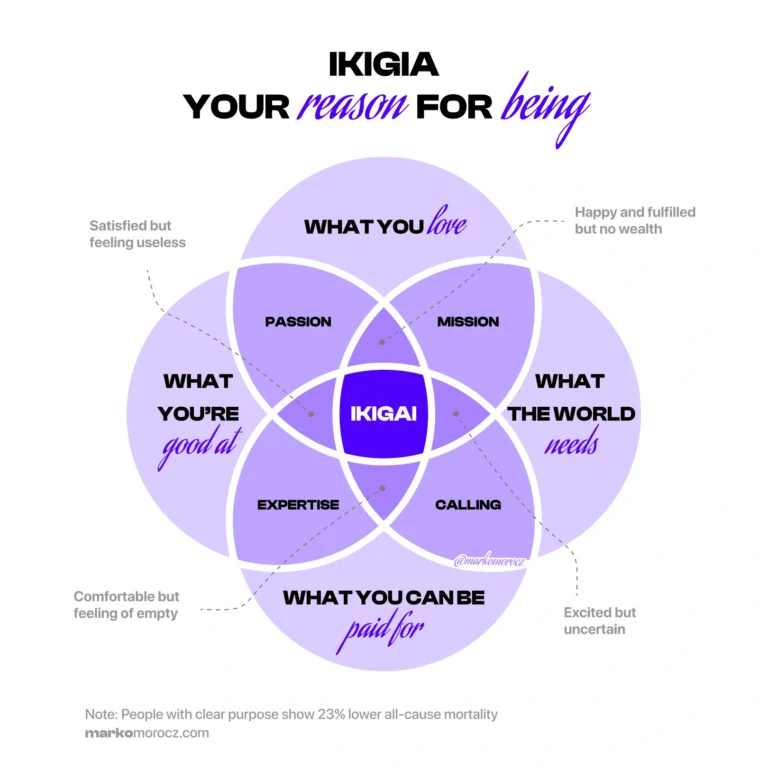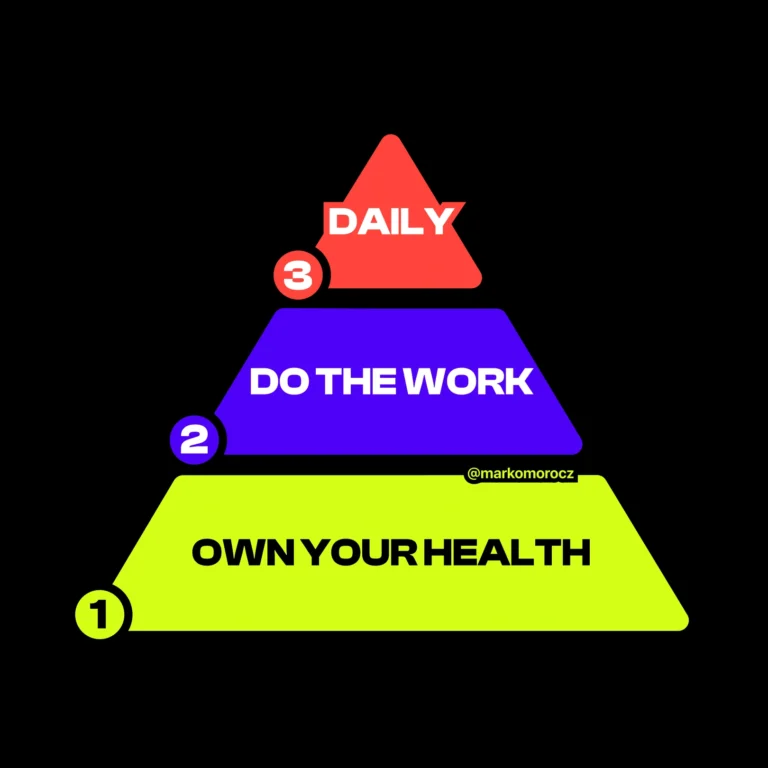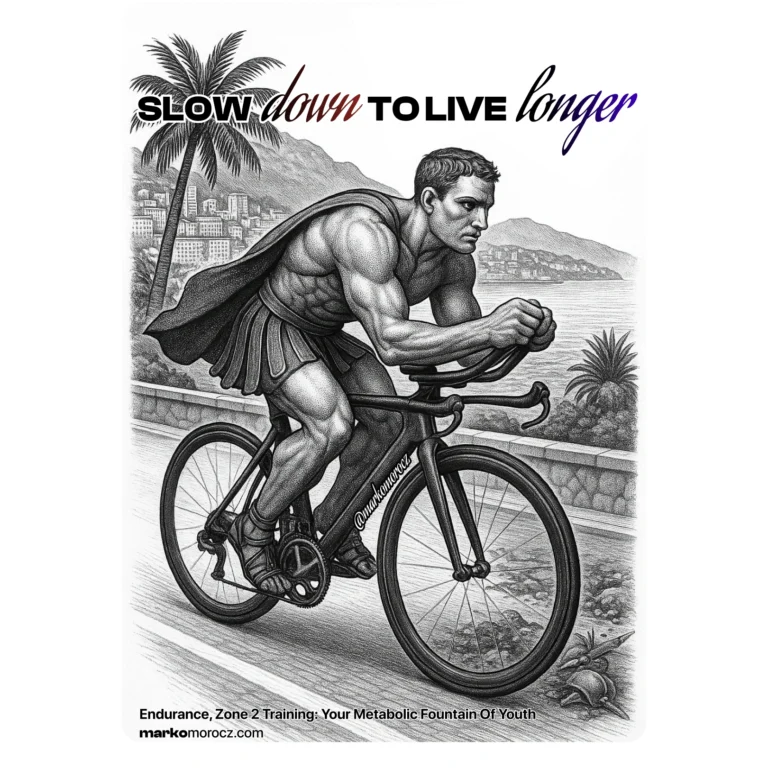I Had 88% Sleep Performance In 2024
I averaged 7:30 hours per night—1 hour more than the average Whoop user.
I didn’t always have great sleep though. I struggled for years.
Think restless nights, and even sleep anxiety.
But I didn’t give up.
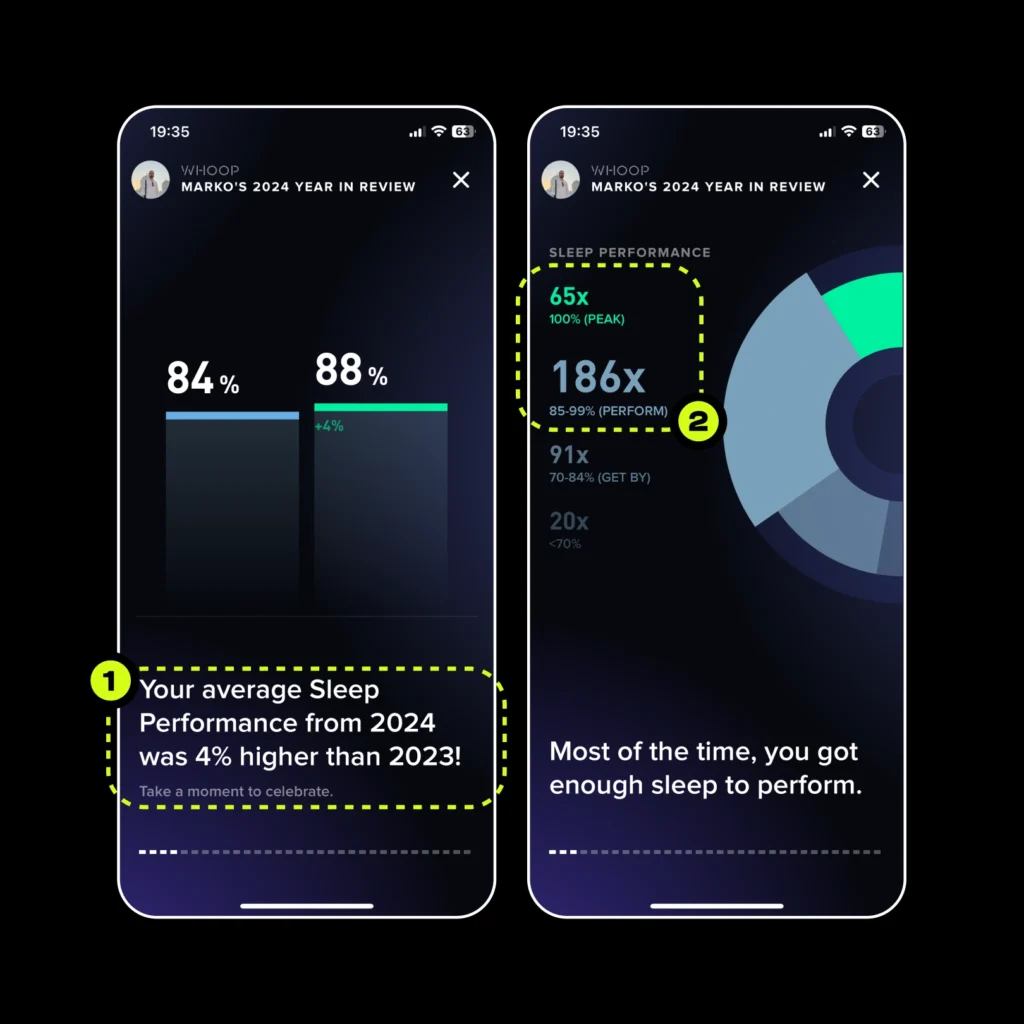
Here’s how I did it with 8 habits (free tracker at the end):
1. Consistent Bedtime
Stick to a consistent sleep schedule. Even on weekends.
Aim for 7-9 hours of sleep each night.
Prioritise your bedtime like you do work meetings.
Don’t let people drunk on sleep deprivation tell you otherwise.
Sleep is cool.
Research confirms this: consistent sleep timing is crucial for maintaining our circadian rhythm, our internal clock.1, 2
2. Curate Your Sleep Environment
Keep your bedroom:
- Cold (60-67°F or 15-19°C)3, 4
- Dark (e.g., blackout curtains, wear sleep mask)
- Quiet (can use earplugs)
Invest in a comfortable mattress and pillows.
Use cotton, linen, or silk.
There are temperature-controlled mattresses like Eight Sleep. Cool stuff.
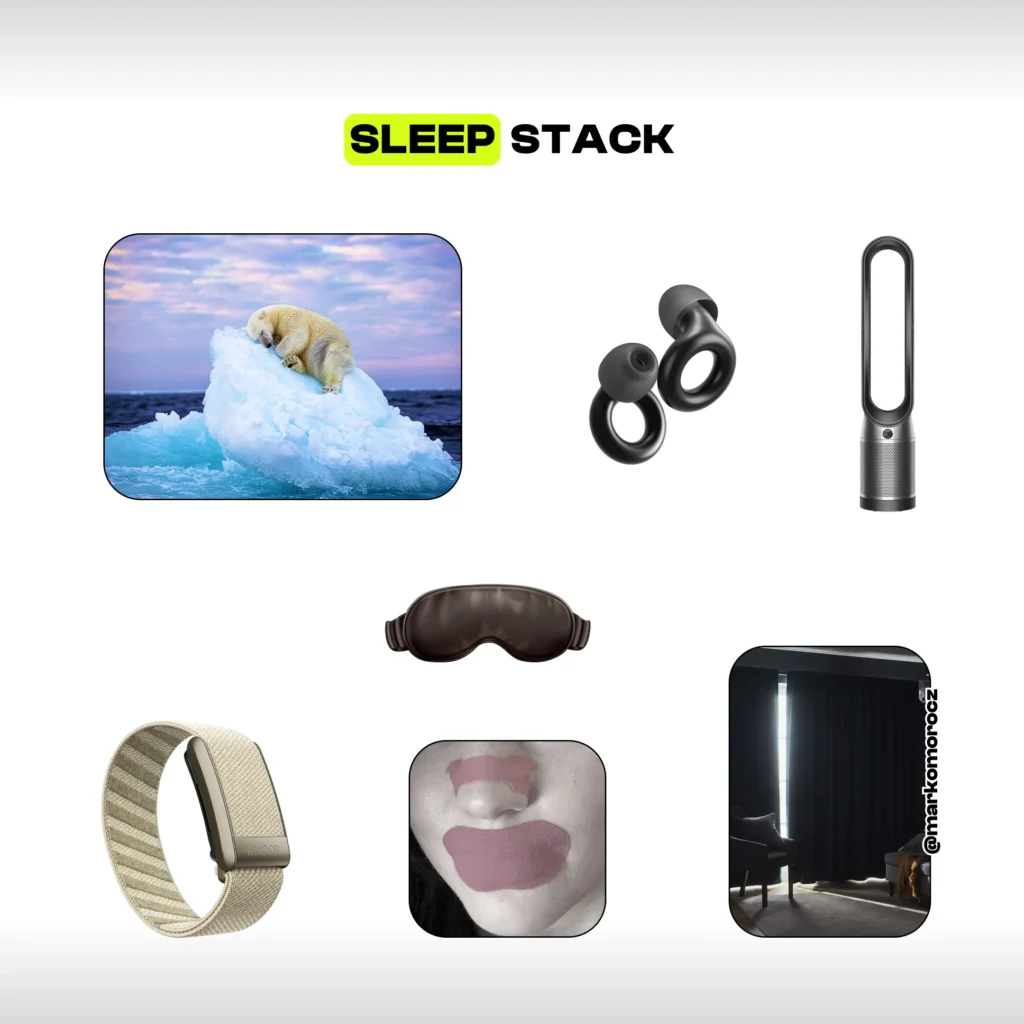
3. View Sunlight
Tough to wake up and get going?
Get outside within the first 15-30 minutes of waking up.
This sets your circadian rhythm (body’s natural clock for sleeping, eating, etc.), boosts your mood and improves your sleep quality.5, 6, 7
View morning sun for:
- 5 minutes in nice weather
- 10 minutes on cloudy days
- 20-30 minutes on overcast days
4. Avoid Stimulants
Cut caffeine and alcohol at least 10 hours before sleep.
They each disrupt your mood and sleep.
I don’t consume them at all.
But find what works best for you.
Caffeine reduces sleep time by 45 minutes and sleep efficiency by 7%, with an increase in sleep onset latency of 9 minutes, according to science.8 For optimal sleep, don’t drink, eat, chew caffeinated products ~8.8 hours before bedtime.
Similarly, alcohol decreases sleep quality, efficiency and REM sleep, and increases awakenings. 9
5. Avoid Late Meals
Try to eat your last meal 4+ hours before bed.
Eating close to bedtime disrupts:
- Digestion
- Blood sugar levels
- Melatonin production
You want your body to use its energy to recover.
Not for working on your massive meal.
6. Dim Bright Lights
Dim your lights 1-2 hours before bed.
Use:
- Warm (red is best) lighting
- Blue light filters on devices
- Blue light-blocking glasses
Limit screen time at least 1 hour before bed.
For the passionate ones, candlelight and moonlight are fine.
Research shows that light plays a critical role in regulating circadian rhythm and melatonin production.
During evening hours, maintaining low lighting (less than 180 lux) allows your body to undergo its natural physiological move toward sleep.10 After lights out, your bedroom should be dark, with lux no higher than 5 to avoid disrupting your sleep cycles.11
7. Wind-down Routine
Set aside 30-60 minutes to wind down. For example:
- Read (on paper)
- Take a hot shower
- Do breathing exercises (e.g., 4-7-8 breathing method)
- Listen to soothing music
Transition from “work mode” to “sleep mode.”
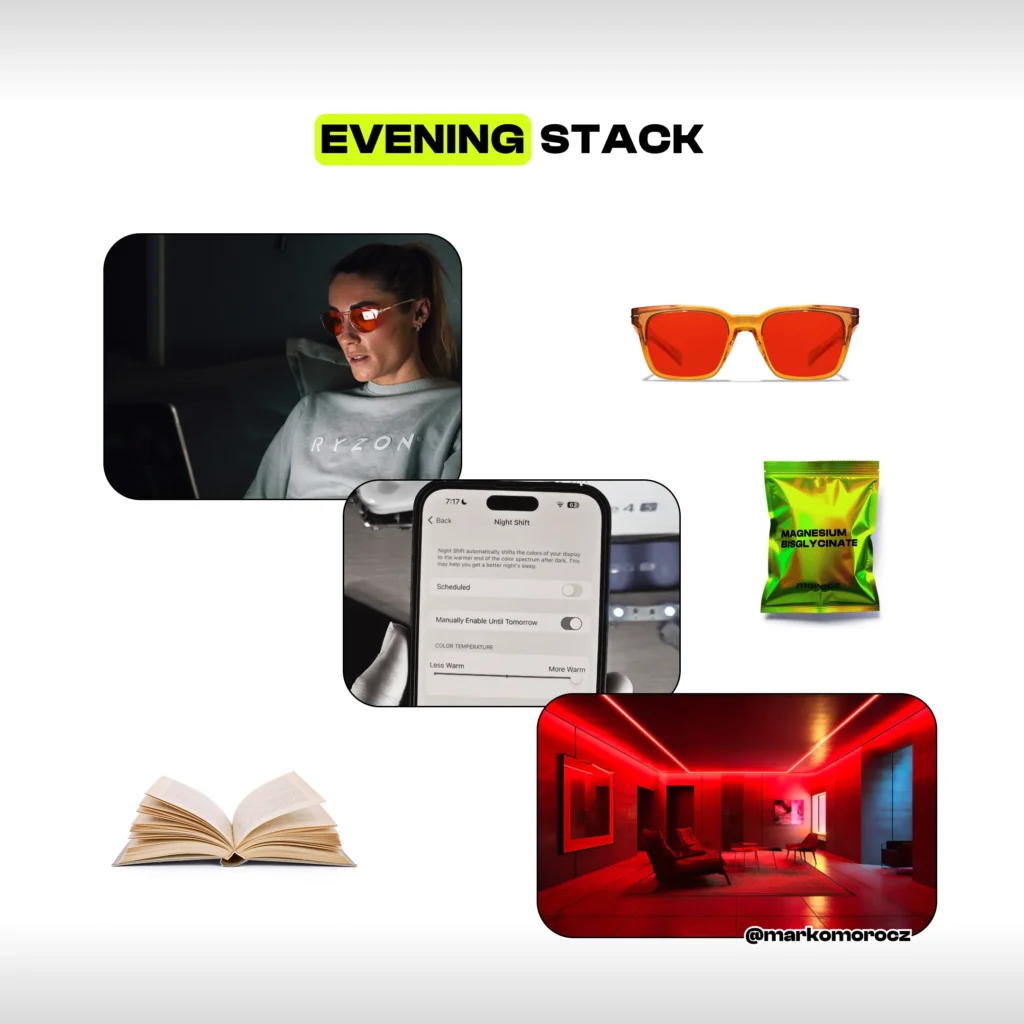
8. Track Data
Track your sleep. Use a journal or sleep tracker.
Monitor
- Consistency
- Time in bed
- REM & Deep sleep
- HRV (heart rate variability)
- Respiration
- RHR (resting heart rate)
Adjust your habits based on the data.
What do I use?
Both Whoop and Garmin. Others work too.
Research validates the accuracy of modern sleep trackers. A study evaluating six wearable devices including WHOOP and Garmin found that when compared with polysomnography (the gold standard), these devices achieved 86-89% agreement for determining sleep versus wake states, making them reliable for tracking sleep timing and duration.12, 13
How to build these habits?
Step by step. One at a time.
Slow is fast when it comes to reshaping your sleep.
I once chased a good night’s sleep so much that I developed sleep anxiety for months. But I learnt to manage stress, stayed consistent, and turned things around.
And in 2024, I finally cracked sleep. My mind was focused, my energy soared, and life just flowed.
The metrics? 88% sleep performance and an average of 7.5 hours of sleep per night.
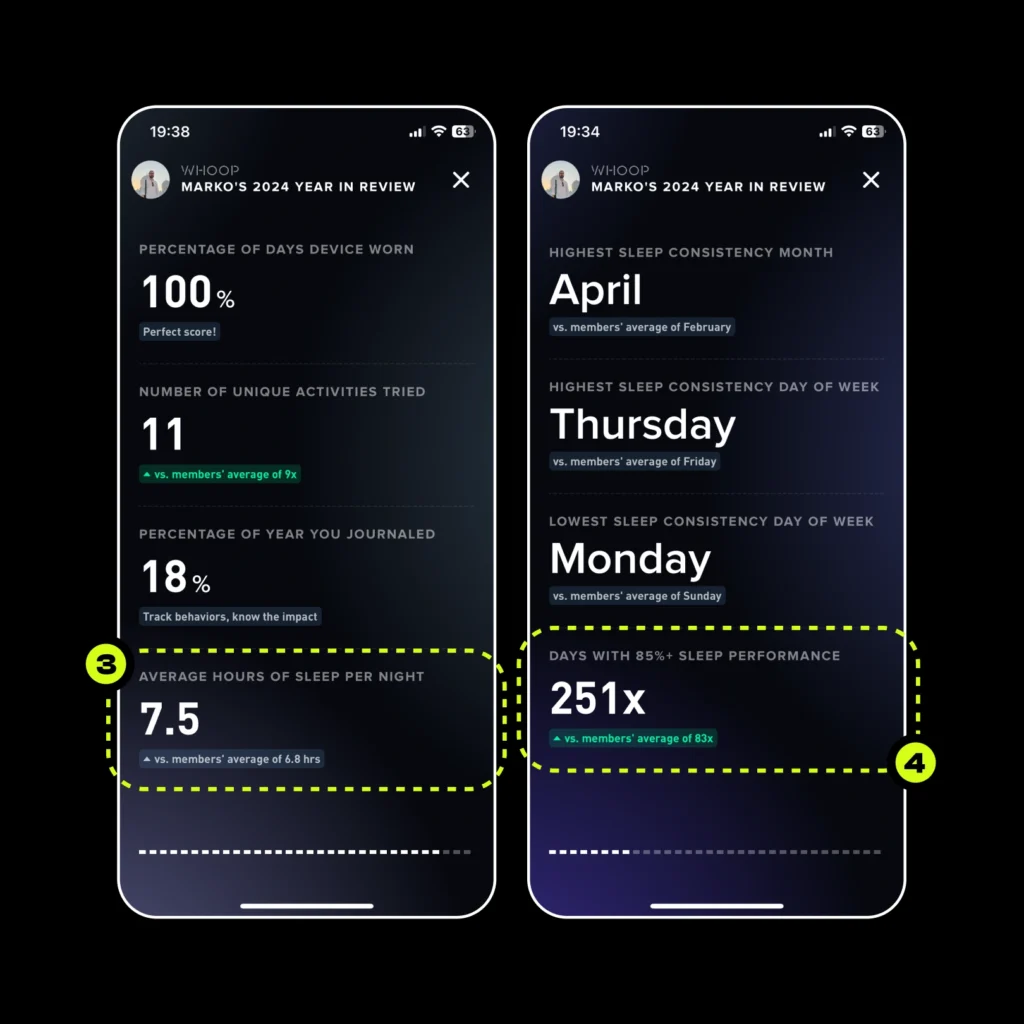
You can too. There’s no luck involved. What you put in is what you get out—like with exercise.
Does it mean that I always sleep like a baby? Almost always. But there are times I can’t fall asleep. Or I wake up at 3AM and can’t go back fighting alongside Achilles.
It’s normal. We’re humans. Not perfect. And pushing the limits sometimes means suboptimal recovery.
When this happens, I have a battle plan:
- NSDR helps me relax when I wake at 3AM
- Cold plunges shock my system back to life the next morning
- Strategic exercise releases the right hormones to power through
The combination works every time. Even when sleep fails me, I have systems that don’t.
Start fixing your sleep today to be a top performer tomorrow.
Thanks for reading this far. If you found value in this article, share it to help more people sleep better!
I’d appreciate it. And the world would be a better place if everyone got a good night’s sleep.
Want my free sleep checklist to track your progress? Use it:
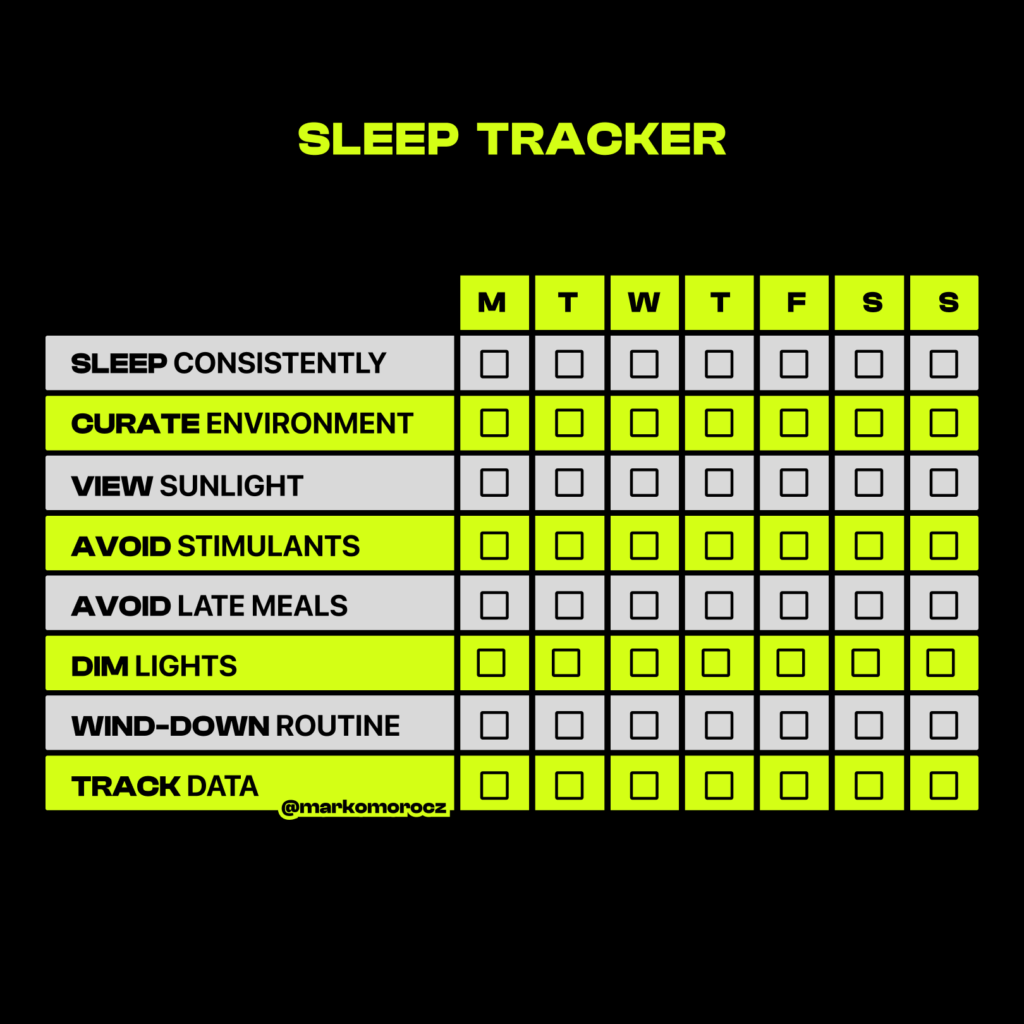
Got insights or burning questions? Drop them below—I’d love to hear your take!
References
- Roenneberg, T., et al. (2019). “Chronotype and social jetlag: A (self-) critical review.” Biology. 8(3), 54. ↩︎
- Walker, M.P. (2017). “Why We Sleep: Unlocking the Power of Sleep and Dreams.” Scribner. ↩︎
- Okamoto-Mizuno, K., et al. (2012). “Effects of thermal environment on sleep and circadian rhythm.” Journal of Physiological Anthropology, 31(1), 14. ↩︎
- Ramos, A.R. (2024). “Best Temperature For Sleep, Effects of Temperature on Sleep.” WebMD. ↩︎
- Zeitzer, J. (2023). “Why Sunlight Can Help You Sleep Better.” Sleep.com. ↩︎
- Huberman, A. (2025). “Using Light for Health.” Huberman Lab Newsletter. ↩︎
- Santhi, N. (2024). “5 Scientifically Proven Benefits of Morning Sunlight for Sleep-Wake Cycle.” Amerisleep. ↩︎
- Watson, E., et al. (2023). “The effect of caffeine on subsequent sleep: A systematic review and meta-analysis.” Sleep Medicine Reviews, 68, 101771. ↩︎
- Song, F., et al. (2023). “Sleep, alcohol, and caffeine in financial traders.” PLOS ONE, 18(11), e0294293. ↩︎
- Okamoto-Mizuno, K., et al. (2024). “Darkness Matters – How Light Affects Sleep.” Sleep Foundation. ↩︎
- Foster, R.G., et al. (2020). “Effects of light on human circadian rhythms, sleep and mood.” Nature Reviews Neuroscience, 21, 196-214. ↩︎
- Miller, D.J., et al. (2022). “A Validation of Six Wearable Devices for Estimating Sleep, Heart Rate and Heart Rate Variability in Healthy Adults.” Sensors, 22(16), 6317. ↩︎
- Giovangrandi L., et al. (2023). “State of the science and recommendations for using wearable technology in sleep and circadian research.” Sleep, 47(4), zsad325. ↩︎
